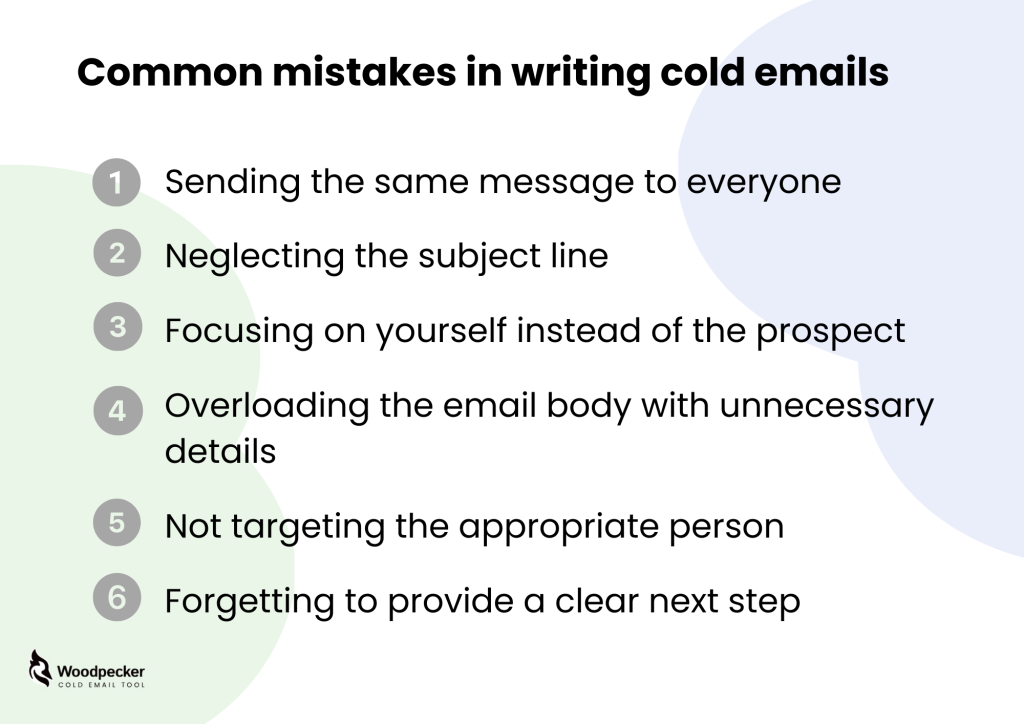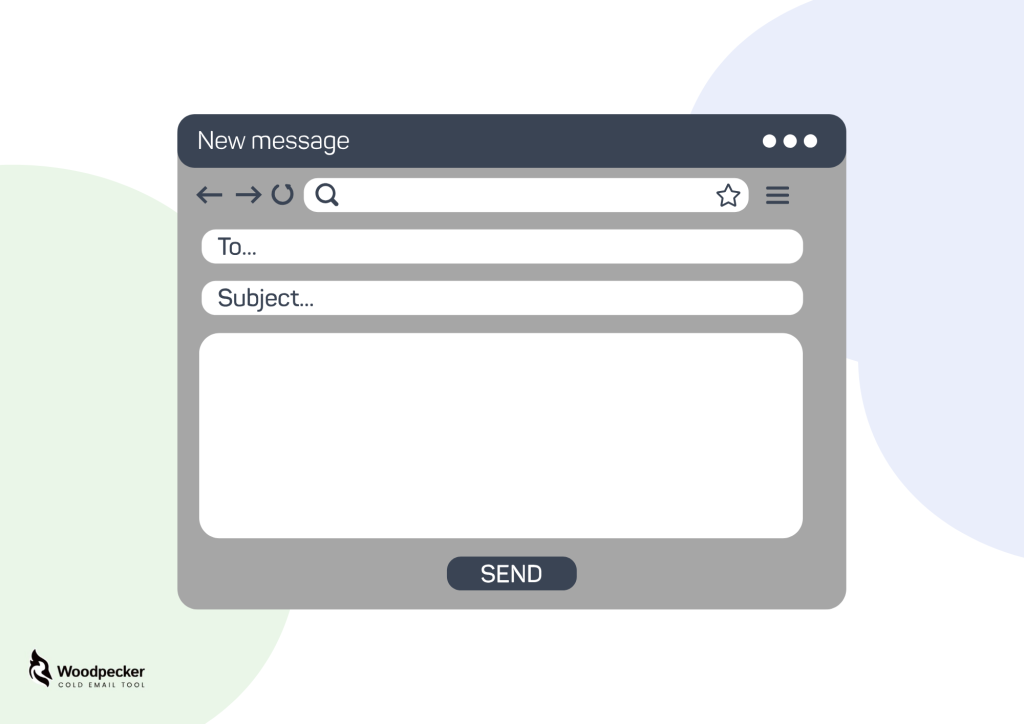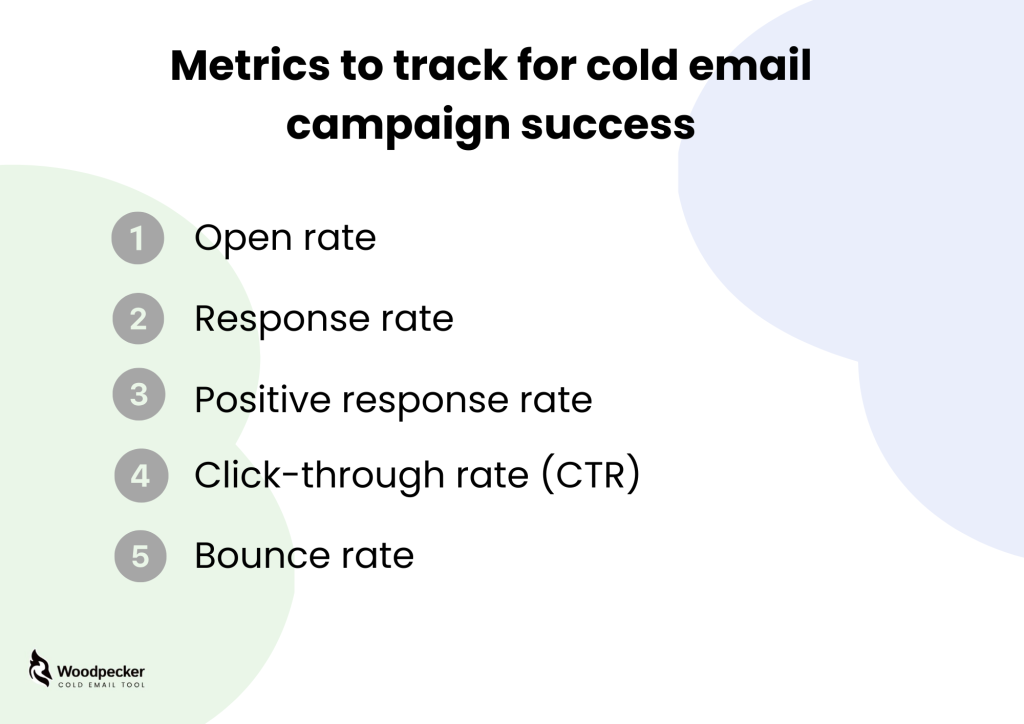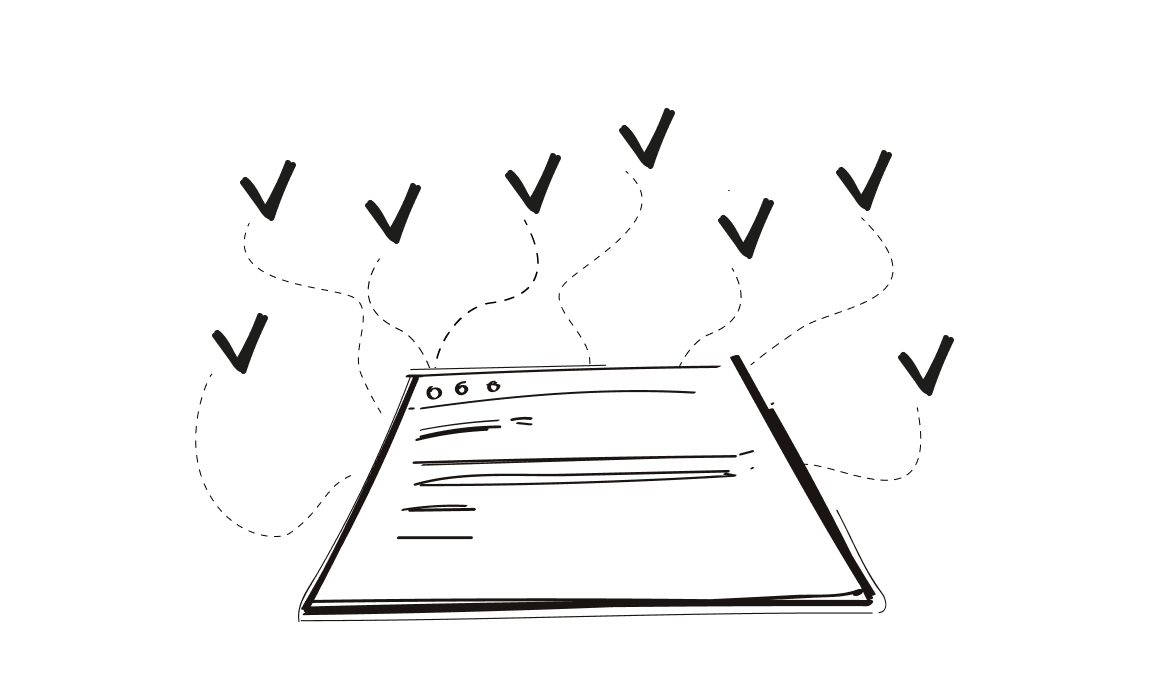Cold emailing is a powerful way to reach new prospects, spark interest in your product or service, and drive qualified leads into your sales pipeline. However, writing cold emails that get responses requires finesse, strategy, and a strong understanding of your target audience. This blog post will walk you through crafting the best cold email format to ensure your outreach efforts turn into more leads and positive responses.
Why Cold Emailing Works (When Done Right)
Cold emailing is often seen as the digital counterpart to cold calling, but it has distinct advantages. When you focus on solving the prospect’s pain points, offering a clear value proposition, and targeting the right person, your outreach email can bypass the dreaded spam folder and land directly in the prospect’s attention. A compelling cold email can replace hours of phone calls, leading to a higher response rate and improved results.
The key to do cold emailing right?
Clarity over complexity.
Overcomplicated messaging leads to low response rates, but a few strategic shifts can make all the difference. Social proof builds trust fast, a single clear CTA keeps things focused, and brevity wins – 50 words max, or your email is getting ignored. Personalization is still important, but relevance matters more. Instead of just using their name, show how you solve their problem. When your offer is clear, prospects respond.
👉 Want a deep dive into what’s working in cold email? Read more here.
Common Mistakes in Writing Cold Emails
Before diving into the best cold email format, let’s address a few mistakes that could send your email straight to the trash folder instead of generating interest. These missteps often stem from a lack of personalization, focus, or clarity—let’s break them down.

1. Sending the same message to everyone
Think about it: would you respond to an email that feels like it was written for the wrong person? Probably not. Personalization isn’t just a nice touch; it’s the difference between being ignored and catching the prospect’s attention. Instead of generic copy, craft your message to align with the recipient’s role, challenges, and industry. The best cold email template speaks directly to the reader as if you’re addressing them over coffee.
2. Neglecting the subject line
The subject line is like the headline of a blog link—it’s your first shot at piquing interest. Without a compelling subject line, your email risks getting buried in an inbox full of unread messages. Consider phrasing that hints at the value you’re offering. For example:
- “Quick ideas for improving your sales process”
- “Struggling with [specific pain point]? Let’s chat.”
A great subject line can guide the prospect to open your email, setting the stage for a positive interaction.
3. Focusing on yourself instead of the prospect
Nobody cares about how great your product or company is—until you show them how it solves their problems. Instead of listing your achievements or rattling off features, shift the focus to the prospect’s pain points and how you can address them. Paint a picture of how your valuable resources or services can streamline their sales process or improve their efficiency. This approach positions your email as a helpful nudge, not just another sales pitch.
4. Overloading the email body with unnecessary details
Imagine opening an email and finding a wall of text—it’s overwhelming and screams, “I don’t have time for this!” Sales reps are busy, so get straight to the point. A cold email should be as concise as it is impactful. Highlight one landing page or guest post that adds value and supports your pitch, then ask for a quick call.
A simple structure like this works:
- Address their challenges.
- Offer a solution.
- Suggest an actionable next step (e.g., a quick call or meeting).
5. Not targeting the appropriate person
Even the most polished email won’t succeed if it lands in the inbox of the wrong person. Do your homework before hitting send. Use LinkedIn, the company’s website, or other tools to identify the appropriate person to contact. Sending emails to decision-makers with the power to act on your proposal is critical. Whether it’s the head of sales or marketing, knowing your audience ensures your message resonates and avoids being deleted.
6. Forgetting to provide a clear next step
Emails without a clear next step are a dead end. If you’re asking for a quick call, link to your scheduling tool. If you’re sharing resources, ensure they’re easy to access through a clickable blog link or relevant landing page. Prospects are more likely to respond when your call-to-action is specific and seamless to follow.
By avoiding these common pitfalls, your emails won’t just dodge the spam folder—they’ll earn attention, engagement, and, ultimately, results.
The Best Cold Email Format for High Response Rates
Crafting a cold email that stands out in a crowded inbox isn’t about luck—it’s about following a structure designed to connect with the recipient on a personal and professional level. Below is a proven format that maximizes your chances of sparking interest and getting a response.
1. Compelling Subject Line
Your subject line is your first—and sometimes only—opportunity to grab attention. A well-crafted subject line doesn’t just entice the reader; it ensures your email gets opened.
What makes a great subject line?
- Relevance: Address a pain point or highlight the prospect’s job title to signal that the email is tailored for them.
- Specificity: Mention a clear benefit or outcome your product or service can deliver.
- Curiosity or urgency: Pique interest by hinting at a solution or emphasizing timeliness.
Examples of Compelling Subject Lines:
- “Quick ideas to solve [specific pain point]”
- “How [prospect’s company] can [achieve desired outcome]”
- “Struggling with [pain point]? A few ideas inside”
- “3 ways to improve [specific process] today”
- “Your competitors are already doing this—are you?”
A compelling subject line can be the difference between a cold email that gets ignored and one that opens doors to new opportunities.
2. Personalized Opening Line
The opening line is where you prove you’ve done your homework. This isn’t the place for generic intros like, “I hope this email finds you well.” Instead, dive straight into something specific and meaningful about the recipient or their company.
How to Nail the Opening Line:
- Use their first name—always.
- Reference their company, job title, or recent achievement.
- Show genuine interest in their work or challenges.
Example Opening Line:
“Hi [First Name], I noticed on your LinkedIn profile that you’re leading [department] at [prospect’s company]. It’s impressive how your team recently [specific achievement].”
This kind of personalization immediately shows that your email isn’t part of a bulk campaign but crafted specifically for them. It sets a tone of professionalism and care, encouraging the recipient to read further.
3. Value Proposition
Your value proposition is the heart of the email—it’s where you tell the recipient why they should care. The focus should always be on solving their problems, not selling your product.
What to Include in Your Value Proposition:
- Highlight the pain point your product or service addresses.
- Offer a specific benefit or outcome they can expect.
- Back it up with social proof, like testimonials or case studies.
Example Value Proposition:
“We’ve helped companies like [similar companies] reduce [pain point] by [specific percentage or result]. Our [product or service] might be a great fit for [specific benefit].”
By positioning your offer as a solution to their challenge, you’re demonstrating value without resorting to hard-selling tactics.
4. Clear Call-to-Action (CTA)
The biggest mistake in cold emails? Ending without a clear next step. A vague CTA like “Let me know your thoughts” often leads to no response. Instead, guide the recipient toward a specific action that’s easy to complete.
Best Practices for CTAs:
- Be concise and direct.
- Ask for a quick chat, brief call, or meeting request.
- Include a calendar link to make scheduling effortless.
Example CTA:
“Would you be open to a brief call this week to discuss how we can help [specific pain point]? Here’s my calendar link to make scheduling easier: [calendar link].”
A strong CTA eliminates friction, making it simple for the recipient to say “yes” and take the next step.
5. Professional Email Signature
Your email signature is more than just a sign-off—it’s a chance to reinforce your credibility and provide useful information. A polished signature makes you look professional and trustworthy.
What to Include in Your Email Signature:
- Your name and job title
- Your company name and website
- Links to your LinkedIn profile and other relevant social media
- Your contact details, like phone number and email
You can create it using an email signature generator.
Example Signature:
Jane Doe
Sales Representative | [Your Company Name]
📞 (123) 456-7890 | 🌐 [yourwebsite.com]
Connect on LinkedIn: [LinkedIn profile link]
A strong signature leaves no doubt about who you are and how to contact you.
5 Cold Email Templates That Work (And Why They Do)
Crafting a cold email isn’t about fitting into a one-size-fits-all box; it’s about tailoring your approach to each scenario. Here are five templates designed for different situations, along with a bit of insight on why they’re effective.

1. Cold Sales Email Template
Subject Line: “Ideas for [specific pain point]”
Body:
Hi [First Name],
I work with companies like [similar companies] to [specific benefit]. Recently, we helped [satisfied customer] achieve [result]. I believe our [product or service] could help [prospect’s company] tackle [pain point] effectively.
Would you be open to a quick chat next week? Here’s my calendar link: [calendar link].
Looking forward to your response,
[Your Name]
Why This Template Works:
It starts with addressing a pain point—a guaranteed way to grab attention. The concise value proposition avoids overwhelming the recipient, while the simple, actionable CTA (a quick chat) removes friction.
Food for Thought: Are we overloading our prospects with value here, or should we trust curiosity to do its job? Sometimes leaving a bit unsaid makes your offer more enticing.
2. Follow-Up Email Template
Subject Line: “Following up on [topic discussed]”
Body:
Hi [First Name],
I wanted to circle back on my earlier email about [specific topic]. I know schedules can get busy, so I wanted to share a few quick tips on how we could help [prospect’s company] achieve [specific result].
Let me know if a brief call works for you: [calendar link].
Best regards,
[Your Name]
Why This Template Works:
It acknowledges the chaos of the recipient’s inbox while gently nudging them to revisit your earlier message. The added value (“quick tips”) keeps it fresh, ensuring you’re not just repeating yourself.
Food for Thought: Is persistence the line between success and annoyance? Following up is essential, but overdoing it can land you in the spam folder faster than you think.
3. Problem-Solution Email Template
Subject Line: “Struggling with [pain point]? Here’s a fix”
Body:
Hi [First Name],
I noticed that [specific pain point] is a common challenge for companies in [industry]. Our [product/service] was specifically designed to [solve pain point].
For example, [specific customer] used our solution to [achieve result], and they saw [specific metric or outcome]. Would you like to see how this could apply to [prospect’s company]?
I’d be happy to hop on a quick chat to explain more—here’s my calendar link: [calendar link].
Best regards,
[Your Name]
Why This Template Works:
It positions you as a problem-solver, not a salesperson, which makes your email feel less like an intrusion and more like a helping hand. Concrete results offer credibility and establish trust.
Food for Thought: Does offering a fix too early make us seem presumptuous? Sometimes, prospects need to feel the weight of their problem before they’re ready to hear your solution.
4. Social Proof Email Template
Subject Line: “How [competitor] achieved [result] with us”
Body:
Hi [First Name],
I wanted to share how [competitor] in your industry used our [product/service] to [specific achievement]. They improved [specific metric] by [percentage/result], all within [timeframe].
If you’re exploring ways to achieve similar results, I’d love to discuss how we can help [prospect’s company] as well.
Would a quick call next week work for you? Here’s my calendar link: [calendar link].
Best,
[Your Name]
Why This Template Works:
Leveraging competitors grabs attention and creates urgency. No one wants to be left behind, especially if their peers are already reaping the rewards of your solution.
Food for Thought: Is mentioning competitors risky? It could be perceived as aggressive, but if done tactfully, it’s a psychological nudge that works wonders.
5. Personalized Outreach Template
Subject Line: “Quick question about [prospect’s company]”
Body:
Hi [First Name],
I saw that [specific initiative or news about prospect’s company] and was impressed by [specific detail]. At [your company], we help businesses like yours [specific benefit related to the initiative/news].
I’d love to share a few ideas tailored to your goals. Are you open to a brief chat? Here’s my calendar link: [calendar link].
Looking forward to connecting,
[Your Name]
Why This Template Works:
The hyper-personalized touch ensures the recipient knows you’ve done your research. It’s flattering, relatable, and directly ties their recent efforts to the value you bring.
Food for Thought: Can we sustain this level of personalization at scale? Tools like AI and automation help, but real authenticity still requires effort.
Choose from 75 Woodpecker’s cold email templates. Get and personalize them in a snap.
9 Practices to Increase Response Rates in Cold Email Outreach
Improving response rates in cold email outreach isn’t just about writing better emails—it’s about creating a strategy that makes your message feel personal, relevant, and easy to respond to. These nine practices will help you transform your cold emails into compelling conversations.
1. Personalize for the Target Audience
Cold emails that feel impersonal are a hard pass for most recipients. Personalization shows that you’ve done your homework and care about the individual on the other side of the screen. It’s not just about using their name; it’s about understanding their challenges and tailoring your email to address them specifically.
Here’s How to Make It Personal:
- Start with research: Look at their LinkedIn profile, recent company news, or blog posts they’ve authored.
- Get specific: Mention their role, current projects, or industry trends they’re navigating.
- Tie it to your solution: Frame your product or service as a way to help them solve a pressing problem.
When personalization feels authentic, it’s not just appreciated—it’s powerful. People like to feel seen, not sold to.
2. Leverage Social Proof
Imagine receiving an email that says, “Everyone else in your industry is solving their problems with us—why aren’t you?” It might sound aggressive, but it taps into a psychological truth: people trust what others have already validated. Social proof adds credibility and reduces skepticism, especially when it’s relatable.
How to Leverage Social Proof in Cold Emails:
- Use client success stories: Share a quick win from a similar company in their industry.
- Highlight numbers: “We helped [Company A] increase [specific metric] by 40% in six months.”
- Showcase big names: If you’ve worked with recognizable brands, mention them.
Social proof answers an unspoken question in your prospect’s mind: “Can this work for me?” The answer is, “Yes, and here’s proof.”
3. Optimize for Spam Filters
Even the most brilliantly crafted email won’t generate a response if it lands in the spam folder. Spam filters are notoriously strict, but you can stay on their good side by avoiding common pitfalls. A clean, professional email is key to ensuring your message gets delivered—and opened.
Tips to Stay Out of Spam:
- Avoid trigger words: Terms like “free,” “limited-time offer,” or “100% guaranteed” are red flags.
- Limit formatting tricks: No ALL CAPS, excessive emojis, or over-punctuation (!!!!).
- Authenticate your domain: Ensure your email domain is set up with SPF, DKIM, and DMARC records.
A spam-free email isn’t just about delivery; it’s about showing professionalism and respect for the recipient.
4. A/B Test Your Emails
Sometimes, you don’t know what works until you test it. A/B testing is about experimenting with different versions of your email to see which resonates most with your audience. It’s the email equivalent of fine-tuning a recipe: a pinch more personalization here, a dash of urgency there, and suddenly it clicks.
What to Test:
- Subject lines: Try benefit-driven (“Save 20% on costs”) vs. curiosity-driven (“Here’s what your competitors are doing differently”).
- CTAs: Compare direct asks like “Book a call now” with softer prompts like “Would you be open to exploring this further?”
- Email length: Test whether short, snappy emails outperform more detailed ones.
A/B testing gives you actionable data to refine your approach, ensuring that each iteration gets closer to the perfect email.
5. Write Clear and Concise Emails
There’s no faster way to lose a prospect than by sending an email that rambles. People’s attention spans are short—your email needs to grab attention and make its point quickly. That doesn’t mean stripping out the value; it means being purposeful with every word.
How to Keep It Concise Without Losing Impact:
- Focus on one core idea: Don’t overload the recipient with too much information at once.
- Use simple language: Write like you’re talking to someone, not presenting to a boardroom.
- Break up text: Use short sentences and paragraphs to make the email skimmable.
Concise doesn’t mean boring—it means respectful of the recipient’s time and attention.
6. Use Timing to Your Advantage
Even the most compelling email won’t work if it’s sent at the wrong time. Timing plays a significant role in response rates, and small adjustments can make a big difference. Sending your email when recipients are most likely to check their inbox is critical.
How to Optimize Your Timing:
- Midweek wins: Tuesdays, Wednesdays, and Thursdays tend to have higher open rates.
- Aim for mid-morning: 9–11 a.m. is a sweet spot when people are fresh but not swamped.
- Avoid Mondays and Fridays: Mondays are chaotic, and Fridays are for winding down—not reading cold emails.
Timing is about catching them at their best moment. After all, a perfectly crafted email deserves to be read.
7. Include a Strong and Specific Call-to-Action (CTA)
Your email should make it clear what you want the recipient to do next. A weak or vague CTA can kill an otherwise great email. Think of it as holding the door open—you’re making it as easy as possible for them to step through.
How to Craft Better CTAs:
- Be direct: Instead of “Let me know your thoughts,” say, “Would Thursday at 3 p.m. work for a 10-minute call?”
- Offer options: “I’m free Monday morning or Tuesday afternoon—what works best for you?”
- Make it easy: Include a link to your calendar or attach a relevant resource for them to review.
A clear CTA shows you’re confident and prepared, which is exactly the impression you want to leave.
8. Show Empathy and Address Their Pain Points
Nobody wants to read an email that’s all about you. The best cold emails flip the script, focusing instead on the recipient’s struggles and how you can help. Empathy creates a human connection, making your email stand out from the transactional noise of their inbox.
How to Show Empathy:
- Acknowledge their challenges: “We know how tough it can be to scale without adding overhead.”
- Offer specific solutions: “Our platform can reduce [pain point] by [specific percentage].”
- Use relatable language: “We’ve worked with others in your position and know how overwhelming it can feel.”
Empathy isn’t just a strategy—it’s a way to show you genuinely care about solving their problem.
9. Make Your Email Visually Scannable
Most people don’t read emails; they scan them. If your email is a dense block of text, it’s likely to get skipped. A visually appealing email invites engagement, making your key points easy to find.
How to Make It Scannable:
- Use bullet points: Highlight key takeaways or benefits in a quick, digestible format.
- Break up paragraphs: Keep them short, with plenty of white space in between.
- Highlight key phrases: Use bold or italic text sparingly to draw attention to important points.
A scannable email respects the recipient’s limited time and ensures they understand your message, even if they’re in a hurry.
Combining these nine practices will elevate your cold email outreach from ignored to impactful. Whether it’s about personalization, timing, or crafting a visually appealing layout, every tweak you make strengthens your chances of getting a response. Remember, cold emails aren’t just about selling—they’re about starting a meaningful conversation.
Metrics to Track for Cold Email Campaign Success
Tracking the right metrics is critical to understanding how your cold email campaigns perform and uncovering opportunities for improvement. These metrics reveal everything from the effectiveness of your subject lines to the engagement level of your ideal customer. Here’s how to measure and improve them.

1. Open Rate
The open rate measures the percentage of recipients who open your email. It’s a clear indicator of how well your cold email subject lines perform. A low open rate suggests your subject line isn’t grabbing attention, or your emails may not be landing in the inbox.
How to calculate open rate:
Divide the number of opened emails by the number of emails successfully delivered (emails sent minus bounced emails), then multiply the result by 100.
Example:
If you send 1,000 emails and 800 are delivered (200 bounce), and 160 are opened, your open rate would be:
160 divided by 800, then multiplied by 100, which equals 20%.
What this reveals:
Low open rates often indicate a need for better subject lines or improved email delivery practices. Personalizing your subject line with the recipient’s name, company, or a specific pain point can make a big difference.
A few tips to improve open rates:
- Use curiosity-driven subject lines, such as “Struggling with [specific pain point]?”
- Test different styles of subject lines, such as benefit-oriented or question-based.
- Avoid spammy terms like “free” or “act now,” which can harm deliverability.
2. Response Rate
The response rate measures how many recipients replied to your email, showing the overall effectiveness of your email body and call-to-action.
How to calculate response rate:
Divide the number of replies by the number of emails successfully delivered (emails sent minus bounced emails), then multiply by 100.
Example:
If you send 800 delivered emails and receive 40 replies, your response rate is:
40 divided by 800, then multiplied by 100, which equals 5%.
What this reveals:
A low response rate suggests your email isn’t compelling enough or your CTA is too vague. Clear, action-oriented CTAs, such as asking for a quick call or sharing a relevant link, can significantly boost responses.
A few tips to improve response rates:
- Focus on addressing the recipient’s pain points in your email body.
- Use social proof, like testimonials or case studies, to build trust.
- Include a strong CTA, such as “Let’s schedule a quick call to discuss this further.”
3. Positive Response Rate
Positive response rate tracks the percentage of recipients who not only reply but also agree to a call, meeting, or next step. This metric helps you understand the quality of your leads and how well your email resonates with your ideal customer.
How to calculate positive response rate:
Divide the number of positive replies (e.g., those agreeing to a meeting) by the number of emails successfully delivered, then multiply by 100.
Example:
If you deliver 800 emails and receive 20 positive replies, your positive response rate is:
20 divided by 800, then multiplied by 100, which equals 2.5%.
What this reveals:
A low positive response rate indicates that while people may be engaging, your offer or value proposition may not resonate strongly enough to move them to action.
A few tips to improve positive responses:
- Highlight your value proposition early in the email.
- Target the ideal customer by segmenting your email list effectively.
- Include testimonials or social media links that demonstrate credibility.
4. Click-Through Rate (CTR)
The click-through rate measures how often recipients click on links in your email. This metric evaluates the effectiveness of your email’s content and CTA in driving engagement.
How to calculate click-through rate:
Divide the number of link clicks by the number of emails successfully delivered, then multiply by 100.
Example:
If 800 emails are delivered and 80 recipients click your link, your click-through rate is:
80 divided by 800, then multiplied by 100, which equals 10%.
What this reveals:
A low CTR may indicate your CTA isn’t strong enough or the link isn’t compelling. Optimizing the placement and clarity of your link can help.
A few tips to improve CTR:
- Include a single, clear link in the email (e.g., a landing page or calendar).
- Make the link action-focused, like “Learn more” or “Schedule your demo.”
- Place the link prominently and repeat it at the end of the email.
5. Bounce Rate
The bounce rate measures the percentage of emails that couldn’t be delivered, either due to invalid email addresses (hard bounces) or temporary issues like full inboxes (soft bounces). This metric ensures your email list is accurate and up-to-date.
How to calculate bounce rate:
Divide the number of bounced emails by the total number of emails sent, then multiply by 100.
Example:
If you send 1,000 emails and 50 bounce, your bounce rate is:
50 divided by 1,000, then multiplied by 100, which equals 5%.
What this reveals:
A high bounce rate suggests your list needs cleaning. An accurate and updated list improves your sender reputation and ensures better deliverability.
A few tips to reduce bounce rates:
- Use email verification tools to clean your list before sending.
- Regularly update your list to remove inactive or outdated addresses.
- Avoid purchasing email lists, which often contain invalid contacts.
Final Tips for Your Cold Email Strategy
- Focus on the recipient’s pain points, not your product or service. Relevance beats hyper-personalization. If you’re not solving their problem, they won’t care.
- Use clear, concise language that’s easy to skim. 50 words max. Anything longer? It’s getting ignored.
- Ensure your emails actually reach the inbox. Mailbox warm-up and real-time email verification are non-negotiable for good deliverability. (Woodpecker automates both.)
- Include a clear call-to-action. One simple next step—no confusion, no friction.
- Send emails like a human, not a bot. AI-generated spam is a fast track to the junk folder. Use Spintax + randomized sending for a natural feel.
- Scale smart. More mailboxes, fewer burned domains. (Woodpecker rotates them automatically.)
- Follow up. Most deals are closed in the follow-up stage—don’t stop after one email.
- Test different approaches. What worked last year won’t cut it in 2025. Adapt, tweak, and refine.
If you want to learn more tips on what works in cold email, check out my LinkedIn post.
Conclusion
Cold emailing is a nuanced art, but with the right cold email format, your outreach emails can transform into a powerful sales tool. Follow these tips, leverage the templates provided, and remember: personalization, value, and clarity are the pillars of success in cold outreach.

